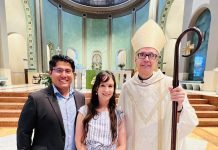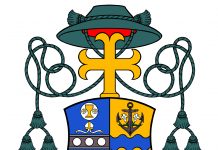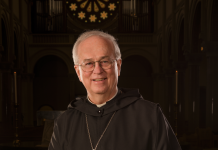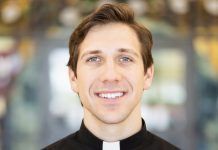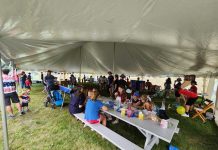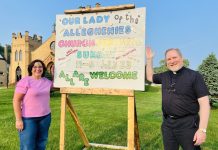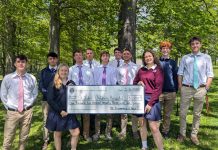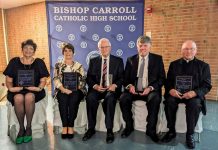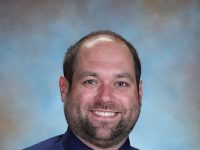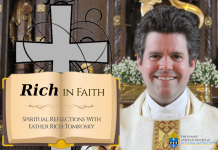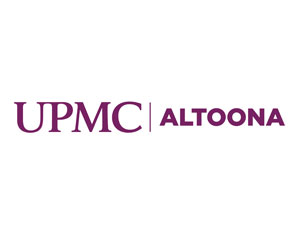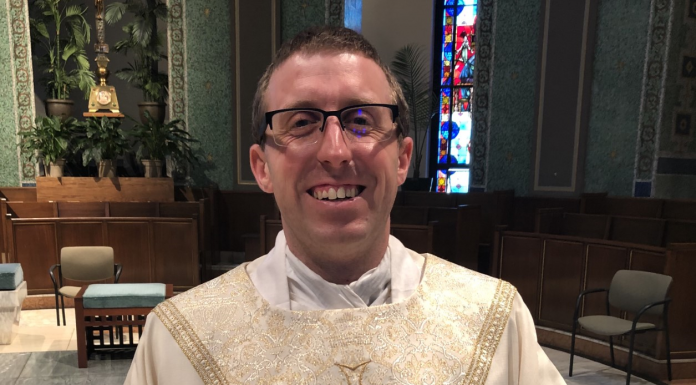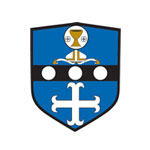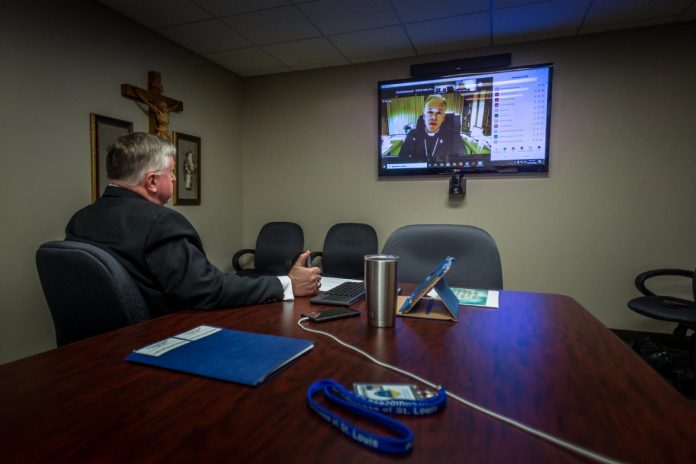
By Carol Zimmermann
WASHINGTON (CNS) — In a year when most meetings have switched to an online format, the fall assembly of the U.S. bishops was no exception.
The Nov. 16-17 virtual meeting involved about 300 bishops on Zoom and many viewers watching the livestreamed public portions.
The two days of discussions went off without a hitch, save for the occasional bishop either on mute or repeating: “Can you hear me?” while Los Angeles Archbishop José H. Gomez, president of the U.S. Conference of Catholic Bishops, gave the thumbs-up sign from the USCCB studio that was the command center for these sessions.
The archbishop, led the meeting along with Archbishop Allen H. Vigneron of Detroit, USCCB vice president and Msgr. J. Brian Bransfield, outgoing USCCB general secretary. The three sat at a desk behind plexiglass separators, quite different from the dais on the hotel ballroom stage at typical bishops’ meetings.
And this year, when bishops discussed topics from the recently issued Vatican report on Theodore McCarrick to ongoing responses at the diocesan level to the coronavirus pandemic and the nation’s reckoning with racism, they did not have to walk up to the microphones to speak but instead raised their hands electronically to be called on and then addressed the group directly, each from very similar looking offices.
A few bishops who spoke with Catholic News Service after the meeting were upbeat about the experience, saying it was an efficient way to meet as a body, but they also missed the camaraderie that is a big part of their annual fall gathering in Baltimore.
For many bishops, this yearly assembly often spans one week because of the meetings before and after the days of executive and public sessions.
One big thing this virtual meeting didn’t have that the bishops missed was the coffee breaks.
Bishop Barry C. Knestout of Richmond, Virginia, said he appreciated the meeting’s abbreviated scheduled, but like others, he definitely missed the “in-between times” of meals and coffee breaks that are all part of building relationships and networking.
Similarly, Auxiliary Bishop Robert P. Reed of Boston, who is president of the television network CatholicTV, said he missed the casual conversations in the hall during breaks or even talking in the elevator that gave him the chance as a fairly new bishop, since 2016, to meet other bishops and hear about their ministries.
He also said he missed the opportunities to pray and celebrate Mass together.
During the in-person meetings, a section of a hotel conference room is designated as a chapel with the exposition of the Blessed Sacrament. Bishop Reed said you could go in at any time and see maybe seven or eight bishops there, which he said was a “very powerful experience.”
“What was lacking was personal interaction,” echoed Bishop W. Shawn McKnight of Jefferson City, Missouri, noting that bishops can be isolated, like everyone else right now. He said it’s important to be able to talk together, “not as a closed club,” but to offer fraternal and spiritual support.
Bishop Knestout said the dynamics in group meetings sometimes come from spontaneous reactions from those you are sitting with. In many online platforms, the chat groups attempt to offer that same experience, he said, but it’s not the same.
One thing that worked for Bishop Reed in this set-up was when each bishop came up full screen with their individual remarks, which he found more personal than the usual format with microphones scattered throughout the room.
“There was a personal touch to it,” he said, noting that you could sense the emotion and sincerity of the bishops as they were speaking from their own offices.
What also worked for these bishops was the savings on travel expenses, and they also liked the ability to still get some work done during the two-day block.
“Under the circumstances,” Bishop Reed said, “it was a great way to get business done and it was still a collegial experience.”
The bishops, like much of the rest of the world, have embraced the Zoom platform as a way to meet in this time of social distancing.
Bishop Knestout said he has used the platform a lot this past year with meetings, conferences and diocesan functions including a eucharistic congress in early November that wrapped up the diocese’s bicentennial celebration.
He thought the bishops’ fall assembly efficiently dealt with the big items the group wanted to discuss, but he still feels that some communication is lost when discussion is solely on screen and it’s also tiring. “Looking at computer screens is very draining,” he said, echoing the sentiment of many students and those working from home these past eight months.
Looking at the pros and cons, he said, “technology is a blessing,” because it enables people to do more, but “it also has its limits.” He stressed that people are meant for in-person encounters, which is what the sacraments also are about and where grace comes in.
Bishop McKnight similarly found the condensed meeting time worked and wondered if it would impact schedules of future meetings, but he, too, would not want to meet in this format on a regular basis.
A week before the virtual assembly, James Rogers, USCCB’s chief communications officer, told CNS: “Hopefully, this is the only (annual bishops’ meeting) we have to do this way, but you never know.”
The unknown is based on the deadly pandemic that has gripped the nation since March, something the bishops spoke about at length, focusing not just on the devastating economic impact on Catholics in their dioceses, but the spiritual renewal they said they have seen as many Catholics have expressed a renewed desire for the Eucharist.
The other issue the bishops mentioned is a concern about Catholics coming back to church after the pandemic.
Archbishop Paul S. Coakley of Oklahoma City, chairman of USCCB’s Committee on Domestic Justice and Human Development, who led the Nov. 17 discussion about the pandemic, said the bishops need to ask: Will people return, after pandemic is over, and how will the church take care of them?
“This is a heavy concern,” Bishop McKnight said after the meeting, noting that it “drives home the point that evangelization is not just about us waiting for people to come in” to our churches, but going out to bring them in.
“When people join the church at Easter, it is often because they have seen the Catholic faith alive in a friend, co-worker or family member and they want that,” he said. “That needs to be our focus,” he added, noting that it echoes both the example and leadership of Pope Francis.
“When the pandemic is over, we have to celebrate that in a big way,” he said.
One simple way to do that, he said, would be to follow the suggestion raised at the meeting by Auxiliary Bishop Robert E. Barron of Los Angeles, who is chairman of the bishops’ Committee on Evangelization and Catechesis.
He said when Catholics are able to go back to church, after the pandemic, they should bring someone with them.


